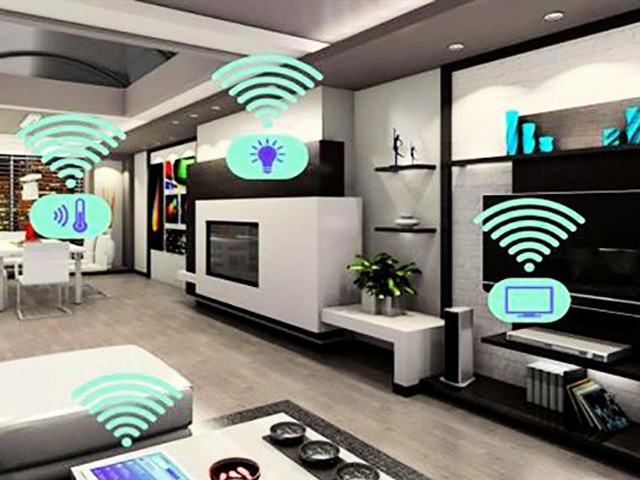Today, there are a variety of smart home products available on the market that can tempt anyone to buy. From multi-color smart bulbs to Security devices and smart speakers, there is a product for every taste and priority in this area. But when shopping these products, you should consider various parameters that the communication protocol is one of the most important titles in that list. In this article, you will learn about the communication protocols used by smart home products.
In a securely connected world, smart products must be able to exchange information with one another. For this purpose, smart products, like other electronic systems, use a set of rules and standards for communication. These rules and standards, generally known as “protocols”, determine the structure of the exchange of information between different devices. You can consider the protocols as the languages for them. Just like human languages, communication protocols are implemented Variously, which are not necessarily compatible with each other and are not easily understood by one another. You should consider the communication protocol used when buying smart home products. Naturally, we prefer to choose products that are compatible with a protocol, as this situation provides the highest level of collaboration and adaptation among different tools. However, sometimes different equipment of a smart home may use two different protocols (or even more).
Wireless communication protocols
Z-Wave

Like most of its counterparts, this protocol is based on Mesh network technology, meaning that any device can pass information to others. So, the reliability and bandwidth of the network are effectively improved. Z-Wave uses 908.4 MHz frequency band, which is lower than the standard level used by most other wireless devices and reduces the likelihood of interference.
The Z-Wave protocol uses a central hub that is responsible for communications control and helps to make configuration and management process of the smart home network, very easy. Regardless of whether the hub is being embedded within a product or as an independent device, you need to connect it to your Wi-Fi router to provide access of devices such as your smartphone to your smart home products.
This protocol provides an excellent level of compatibility among various products (regardless of their manufacturers) and currently, there are near 2000 Z-Wave certified products in the market.
ZigBee

This is another wireless smart home protocol that uses the 802.15.4 standard on a 2.4 GHz frequency band. ZigBee also uses mesh technology, but due to the use of the same frequency band, it is possible to interfere with the 2.4 GHz Wi-Fi networks. Currently, more than a thousand different products support this protocol.
The ZigBee protocol is known for its security because it relies on an encryption mechanism used in banks and financial institutions. Like the Z-Wave, this protocol uses a controller hub that makes managing and configuring process, easier. In fact, many smart home hubs in the market support both Z-Wave and ZigBee protocols.
Thread

A new wireless communication protocol developed by a group of companies including Samsung, Nest, Osram, Qualcomm, etc. This protocol is specifically designed for smart home products with parameters such as energy efficiency, security and configuration and management.
The thread protocol uses frequency band and physical characteristics similar to the ZigBee protocol, which tends to interfere with Wi-Fi networks. The protocol also uses Mesh technology, which boosts its reliability and range. Thread is a highly scalable protocol and can support more than 250 products in a single smart home network.
Wi-Fi

The ubiquitous wireless communication protocol used today in almost all home and office networks. Some smart home products often support Wi-Fi along with one or more other communication protocols. At the same time, Wi-Fi is almost always used to connect control devices like smartphones to the smart home network. Some other smart home protocols, such as WeMo and Nest, actually use an existing Wi-Fi network as their communications platform.
Bluetooth

A short-range wireless communication protocol, which many devices today support. Bluetooth benefits include security, ease of use, and (in its new versions) low energy requirements. Bluetooth is usually used in those smart home products that depend on your presence. For example, a smart lock can sense your smartphone, in your pocket and opens up automatically.
Infrared

Infrared is a simple, reliable, and normally one-way wireless protocol that is considered as the first option for remote control devices.
Wired protocols
UPB

UPB (Universal Powerline Bus) protocol uses a powerline to let smart home products communicate. UPB doesn’t need a hub or central system to manage its work. Configuring this protocol in smart homes is not as easy as previous protocols, but newer products that are compatible with it are easier to set up.
Insteon

The crossroads of wireless and wired Protocols that uses both powerline and wireless communications technology. This protocol creates a dual mesh network structure which, in addition to the high range, transmits the signals through the wire or wirelessly according to the needs and convenience of the user. In this way, even if one of the communication channels is disconnected, the devices can maintain their connection with another.
Ethernet

Although the speed of Wi-Fi networks has improved dramatically, Ethernet is still the fastest and most reliable option for communication between different devices. That’s why many smart home products (especially hubs) are equipped with Ethernet ports, which are often used to connect to Wi-Fi routers.
Before spending money, it’s best first to decide which smart home products you need. Then, you can consider various protocols and compatible products according to your requirements and choose the best options for yourself. Note that a good choice can provide significant savings in your future purchases to expand your smart home network and its capabilities.






